Infertility prevalence and the methods of estimation from 1990 to 2021: a systematic review and meta-analysis
- PMID: 36483694
- PMCID: PMC9725182
- DOI: 10.1093/hropen/hoac051
Infertility prevalence and the methods of estimation from 1990 to 2021: a systematic review and meta-analysis
Abstract
Study question: What is the contemporary prevalence of infertility in world populations and how do they differ by methodological and study characteristics?
Summary answer: Pooled estimates of lifetime and period prevalence of 12-month infertility were 17.5% and 12.6%, respectively, but this varied by study population and methodological approach.
What is known already: Infertility affects millions of individuals worldwide. Accurate measures of its magnitude are needed to effectively address and manage the condition. There are distinct challenges and variation in how infertility is defined and measured, limiting comparability of estimates across studies. Further research is needed to understand whether and how differences in methodological approaches and study characteristics account for heterogeneity in estimates.
Study design size duration: We conducted a systematic review and meta-analysis. Six electronic databases, websites of relevant organizations, and conference proceedings were systematically searched. Searches were limited to those published between 1 January 1990 and 11 March 2021, with no language restrictions.
Participants/materials setting methods: Descriptive and random-effects meta-analysis models were used to examine range of estimates and generate estimates of pooled lifetime and period prevalence of 12-month infertility, respectively, among representative populations. Meta-regression using restricted maximum likelihood was applied to account for definitional and study characteristics and to obtain adjusted estimates. Risk of bias was assessed with a validated tool.
Main results and the role of chance: The search yielded 12 241 unique records of which 133 studies met the criteria for the systematic review. There were 65 and 69 studies that provided data for lifetime and period prevalence of 12-month infertility, respectively. Five methodological approaches were identified: prospective time-to-pregnancy (TTP) design, current duration design, retrospective TTP design, self-reported infertility measure and constructed infertility measure. Ranges for lifetime (3.3-39.7%) and period estimates (1.6-34.0%) were similar and wide even after accounting for methodological and study characteristics. Pooled estimates of lifetime and period prevalence were 17.5% (95% CI: 15.0, 20.3, n = 37 studies, I 2 = 99.5%) and 12.6% (95% CI: 10.7, 14.6, n = 43 studies, I 2 = 99.8%), respectively, with some variation in magnitude by region and methodological approach, but with most CIs overlapping.
Limitations reasons for caution: Pooled estimates generated from meta-analysis were derived from 12-month infertility prevalence estimates that were heterogeneous across different domains, even after adjusting for definitional and study characteristics. The number of studies was small for certain strata from which pooled estimates were derived (e.g. there were only two studies for lifetime prevalence in Africa).
Wider implications of the findings: While findings show a high prevalence of infertility globally and regionally, it also reveals variation in measures to ascertain and compare infertility prevalence. More systematic and comprehensive collection of data using a consistent definition is needed to improve infertility prevalence estimates at global, regional and country-levels.
Study funding/competing interests: This work was supported by the World Health Organization. The authors have no conflicts of interest.
Registration number: PROSPERO CRD42020211704.
Keywords: infecundity; infertility; subfecundity; subfertility; time-to-pregnancy.
© World Health Organization, 2022. All rights reserved. The World Health Organization has granted the Publisher permission for the reproduction of this article.
Figures


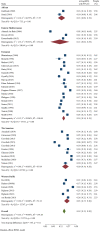
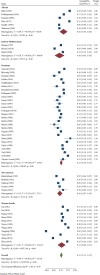
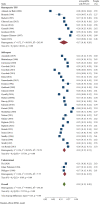
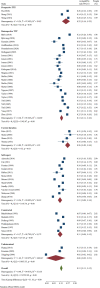
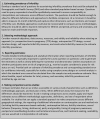
References
-
- Azagba S, Sharaf MF, Xiao Liu C.. Disparities in health care utilization by smoking status in Canada. Int J Public Health 2013;58:913–925. - PubMed
-
- Basso O, Juul S, Olsen J.. Time to pregnancy as a correlate of fecundity: differential persistence in trying to become pregnant as a source of bias. Int J Epidemiol 2000;29:856–861. - PubMed
-
- Boivin J, Bunting L, Collins JA, Nygren KG.. International estimates of infertility prevalence and treatment-seeking: potential need and demand for infertility medical care. Hum Reprod 2007;22:1506–1512. - PubMed
-
- Bonde JP, Joffe M, Sallmén M, Kristensen P, Olsen J, Roeleveld N, Wilcox A.. Validity issues relating to time-to-pregnancy studies of fertility. Epidemiology 2006;17:347–349. - PubMed
Publication types
Grants and funding
LinkOut - more resources
Full Text Sources
Medical
Research Materials
Miscellaneous
